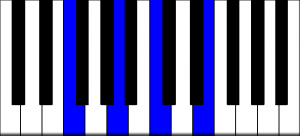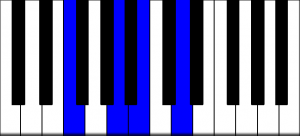Another important element of funk music is chord progressions. While some tunes can stay on just one or two chords for minutes, others feature characteristic harmonic movements. These are often in the domain of the keyboard, piano or organ player.
A very common chord progression in funk and jazz is to start on the ii chord and then move to the V chord. In the key of C these would be Dm7 and G7.

The diatonic 7th chords in the key of C (with the seventh marked in blue)
Instead of Dm7 and G7 the following funk chord segment features Dm9 and G9 chords. Although this changes the sound, the movement is still from the ii minor chord to the V chord, just with different chord voicings. The left hand plays the root and its octave, D and G.
Looking for more funk?



To add some action to the chord change, you can play a chromatic approach to the G in bar 2. Moving the G9 chord down a half step to Gb9 and than back up to G9 creates another interesting element to make the chord progression sound funkier, just as the two sixteenth note-attacks for the second G9 chord.
Looking for more funky chords?

To create more funk chords on the piano, play around with seventh chords, ninth chords and seventh chords with a sharp 9th. But make sure to play them with a cool groove and a funky bassline!



